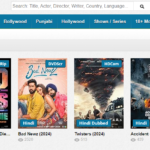7 Ways to Write Professional Documents
- 1 The Role of Professional Writing
- 2 Choosing the Right Document Format: The Case for PDF
- 3 Strategies for Writing Professional Documents
- 3.1 1. Start with a Clear Purpose
- 3.2 2. Know Your Audience
- 3.3 3. Use a Clear and Concise Writing Style
- 3.4 4. Be Organized
- 3.5 5. Proofread and Edit
- 3.6 6. Use Proper Formatting
- 3.7 7. Incorporate Graphics and Images
- 4 Practical Examples of Professional Writing
- 4.1 Business Reports
- 4.2 Academic Papers
- 4.3 Press Releases
- 5 Conclusion
Professional writing is an indispensable skill that plays a crucial role in various aspects of modern life. Whether in the workplace, academia, or public relations, effective writing is essential for conveying ideas, information, and messages clearly and effectively. Mastering professional writing can significantly enhance one’s credibility, productivity, and overall communication abilities. In an era where information is a crucial asset, the ability to produce well-structured and articulate written documents is highly valued and critical for success in many careers.
The Role of Professional Writing
Professional writing is more than just putting words on paper; it involves crafting messages that resonate with readers, fostering understanding, and prompting action. Effective professional writing achieves several objectives:
- Clear Communication: It ensures that the intended message is conveyed accurately without ambiguity. Clarity in writing eliminates misunderstandings and promotes effective dialogue.
- Credibility and Professionalism: Well-written documents enhance the author’s credibility. Attention to detail in writing reflects professionalism and a commitment to quality.
- Productivity: Clear, concise writing saves time by reducing the need for clarifications. It streamlines communication processes, leading to more efficient decision-making and problem-solving.
- Trust and Image Building: Effective writing helps build trust with the audience, whether they are clients, colleagues, or the public. A well-crafted document can create a positive image and foster confidence in the writer’s abilities.
- Decision-Making and Problem-Solving: Professional writing aids in presenting information logically and persuasively, facilitating better decision-making and effective problem-solving.
- Goal-setting helps define and communicate objectives clearly, ensuring that everyone involved understands the goals and expectations.
Choosing the Right Document Format: The Case for PDF
When it comes to transferring and receiving professional softcopies, the Portable Document Format (PDF) stands out as the preferred choice. PDFs offer several advantages:
- Consistency: PDFs maintain the formatting, fonts, and layout of the original document, ensuring that it looks the same on any device.
- Security: PDF files can be encrypted and password-protected, providing an extra layer of protection for sensitive information.
- Compatibility: PDFs are universally compatible across different operating systems and devices, making them a reliable choice for document sharing.
- Interactivity: Modern PDFs can include interactive elements such as forms, links, and multimedia, enhancing the user experience.
- Ease of Editing: Tools like PDFescape allow for easy online editing of PDFs, making it simple to make revisions without altering the original document structure.
Strategies for Writing Professional Documents
1. Start with a Clear Purpose
Every professional document should begin with a clear purpose. Determine the goal and what you want to achieve from the document. This involves understanding the main message and outlining the key points you need to cover. By focusing on the purpose:
- Outline Key Points: Jot down the main ideas and what type of content you want to deliver.
- Avoid Redundancy: Do not use extensive or complicated phrases or sayings that are only wordy and do not add to the subject.
- Stay Focused: Keep your writing aligned with the primary objective to maintain clarity and direction.
2. Know Your Audience
Understanding your audience is fundamental to professional writing. Tailoring your content to the needs and interests of your intended readers ensures that your message is well-received:
- Audience Analysis: Consider the demographics, knowledge level, and expectations of your audience.
- Tone and Style: Adjust your tone and style to suit the audience. For instance, a report for executives may require a formal tone, while a blog post for a general audience might be more conversational.
3. Use a Clear and Concise Writing Style
Clarity and conciseness are hallmarks of effective professional writing. Avoid unnecessary jargon and complex language:
- Simple Language: Use straightforward language that is easy to understand.
- Short Sentences: Break down complex ideas into shorter sentences for better readability.
- Avoid Fillers: Eliminate words that do not add value to the content.
4. Be Organized
The organization is key to producing readable and professional documents:
- Headings and Subheadings: Use headings and subheadings to break the content into manageable sections.
- Bullet Points and Lists: Utilize bullet points and numbered lists to present information clearly.
- Logical Flow: Ensure that the document flows logically from one section to the next, maintaining coherence.
5. Proofread and Edit
Even the best writers make mistakes. Proofreading and editing are essential steps in producing a polished document:
- Spell and Grammar Check: Use software tools to check for spelling and grammar errors.
- Consistency: Ensure consistency in style, tone, and formatting throughout the document.
- Read Aloud: Reading the document aloud can help identify awkward phrasing and errors.
6. Use Proper Formatting
Formatting contributes to the professional appearance of a document:
- Margins and Spacing: Use appropriate margins and spacing to enhance readability.
- Font Choices: Stick to professional fonts like Times New Roman, Arial, or Calibri.
- Citation Styles: Adhere to industry standards for citations, such as APA, Chicago, or MLA, based on the document type.
7. Incorporate Graphics and Images
Visual aids can enhance understanding and make the document more engaging:
- Charts and Tables: Use charts and tables to present data clearly.
- Infographics: Include infographics to explain complex ideas visually.
- Appropriate Use: Avoid overloading the document with unnecessary images; use visuals that complement the text.
Practical Examples of Professional Writing
Business Reports
A well-structured business report provides valuable insights and recommendations:
- Executive Summary: A brief overview of the main points and recommendations.
- Introduction: Background information and the purpose of the report.
- Body: Detailed analysis supported by data and research.
- Conclusion: Summary of findings and recommendations.
Academic Papers
Academic writing requires adherence to specific formats and citation styles:
- Abstract: A concise summary of the research.
- Introduction: Context and objectives of the study.
- Methodology: Explanation of research methods.
- Results and Discussion: Presentation and analysis of findings.
- References: Properly formatted citations of sources.
Press Releases
Press releases communicate essential news to the public and media:
- Headline: A compelling headline that captures attention.
- Lead Paragraph: A summary of the most essential information.
- Body: Additional details and quotes.
- Boilerplate: Information about the organization.
Conclusion
Professional writing is a vital skill that enhances communication, credibility, and success in various fields. By focusing on clarity, understanding the audience, using a concise writing style, organizing content effectively, proofreading, using proper formatting, and incorporating visuals, writers can produce documents that are not only professional but also impactful. In today’s fast-paced, information-driven society, mastering professional writing is not just an asset but a necessity for achieving career goals and building a positive image.

















